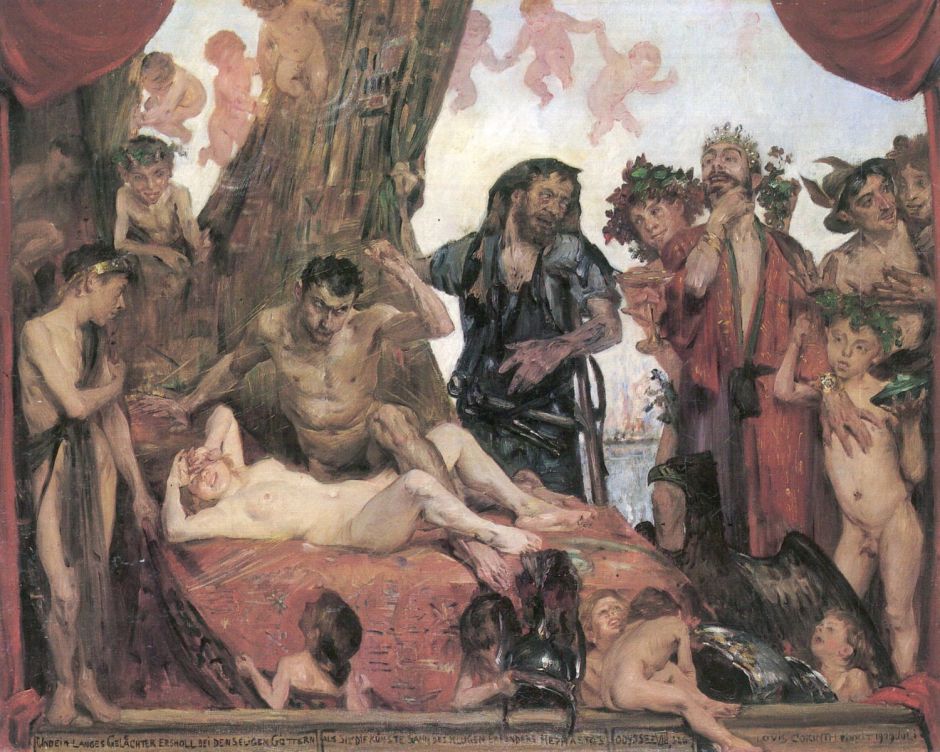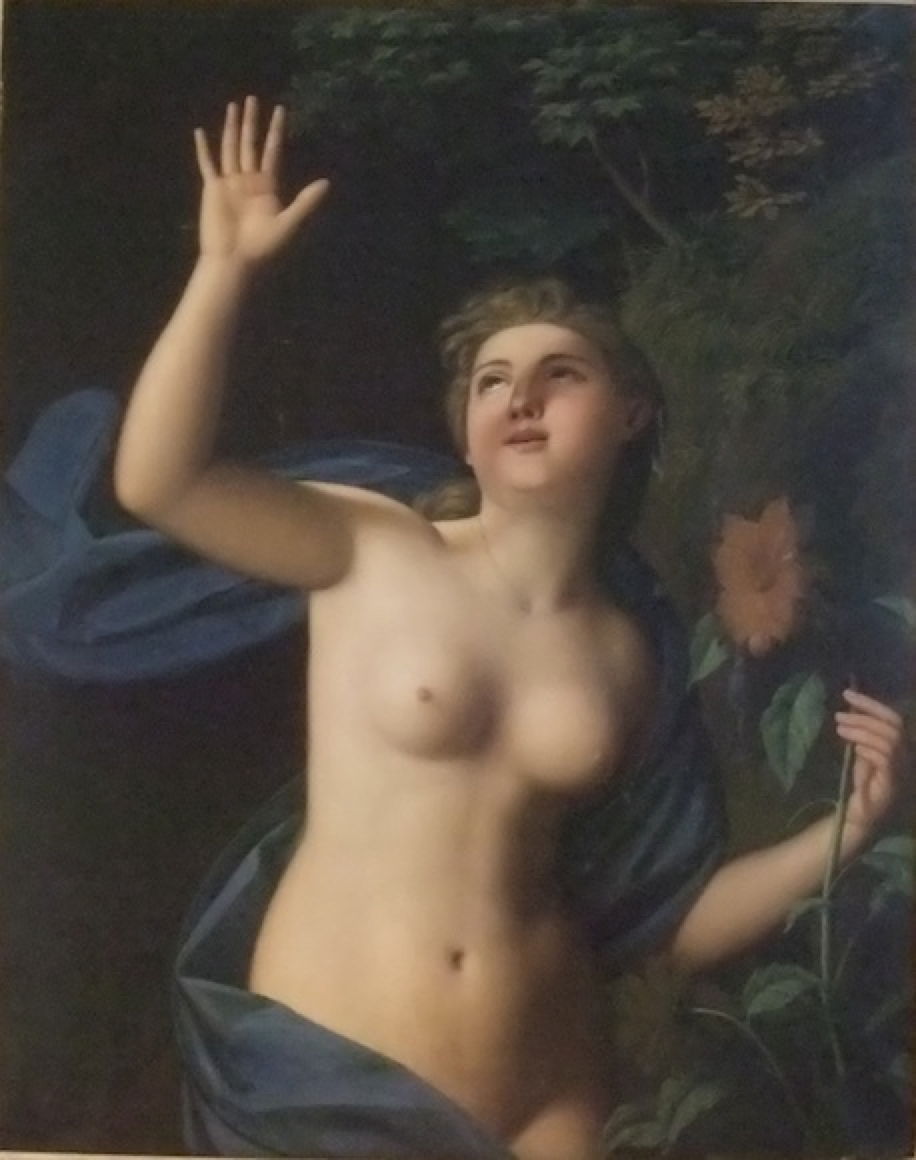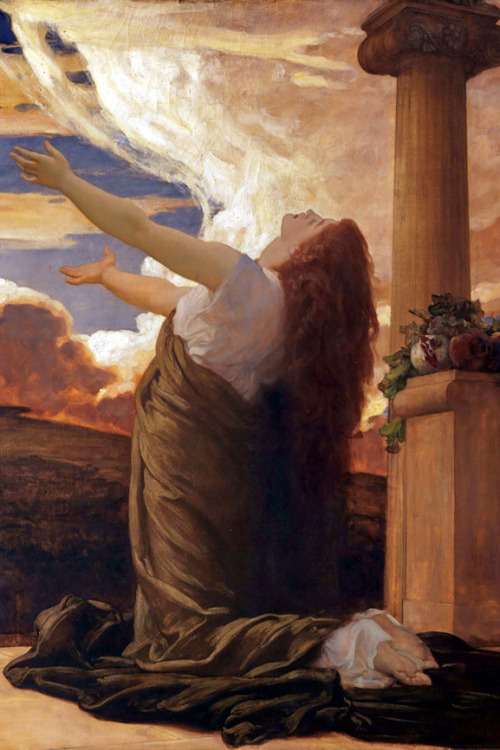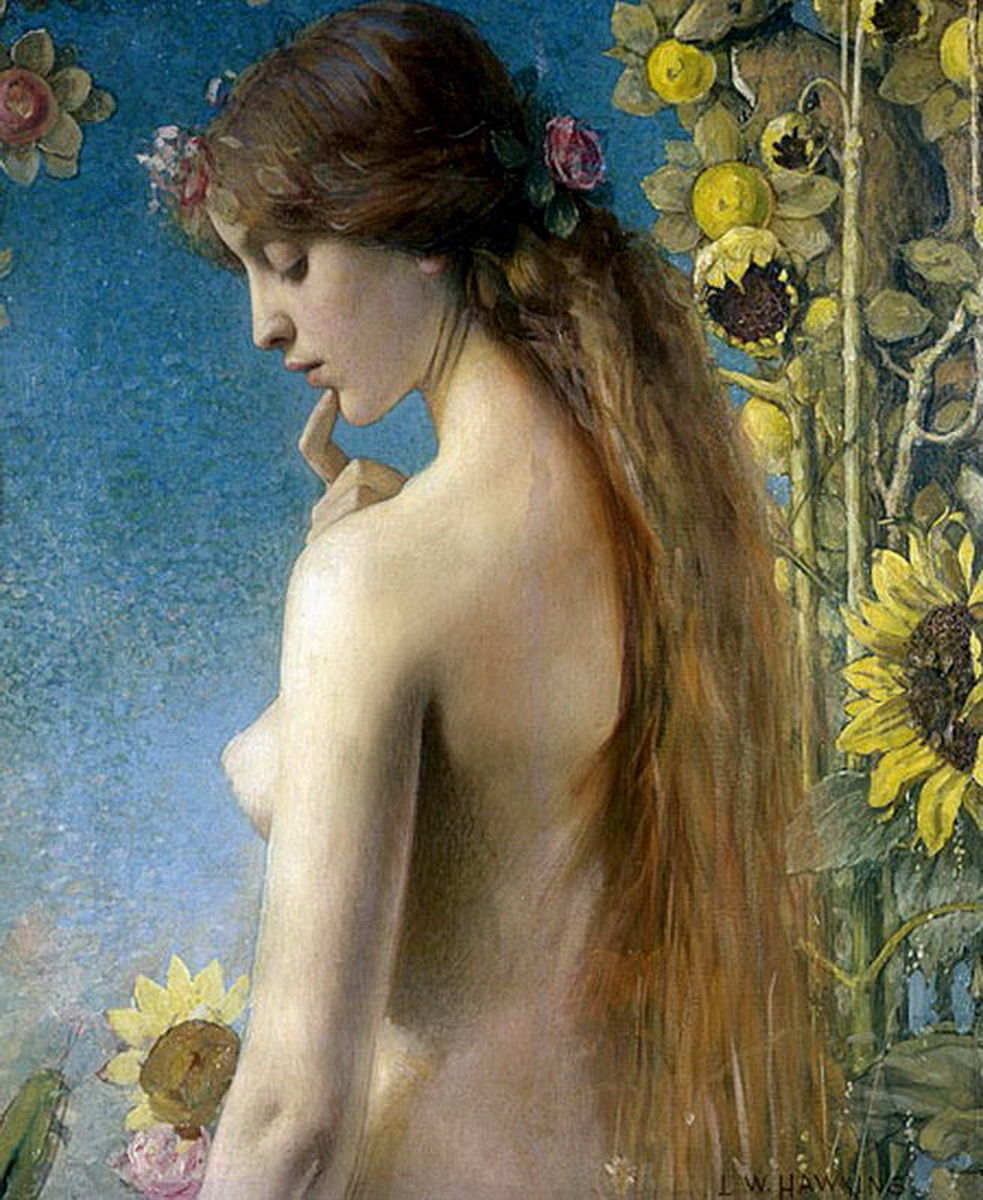After the tragedy of Pyramus and Thisbe has been told by the first of the daughters of Minyas, the second daughter starts telling her story. As is so often the case in Ovid’s Metamorphoses, we get more than we had expected: this narrator opens with a brief summary of the adultery of Venus and Mars, then relates two intertwined stories of the loves of Leucothoë and Clytie for the god of the Sun.
The discovery of the adultery of Venus and Mars has been told widely through the Classic literature, and its most detailed and popular account is probably that in Homer’s Odyssey (book 8, around line 326). Homer also uses another narrator to tell the story there: the bard Demodocus, who gives his account in a bid to cheer Odysseus up when he is being entertained by King Alcinous, after meeting Nausicaä on the island of the Phaeacians.
The Metamorphoses are the earliest surviving account of the myths of Leucothoë – who is not to be confused with Leucothea – and Clytie, and it has been speculated that they may originate from a non-Greek source. There has been confusion over who they loved, with more recent accounts giving the partner as Apollo. In Greek mythology, Helios, the personification of the Sun, is a Titan, but Apollo is an Olympian god with other distinct roles. Roman mythology transferred Helios as Sol, but there was increasing confusion with Apollo. Ovid avoids any such confusion here.
The Story
The second daughter of Minyas, confusingly named by Ovid as Leuconoë, first announces that she will tell of how the Sun fell in love, then embarks on an account of how the Sun was the first to witness the adultery of Venus and Mars, which he reported to the husband of Venus, Vulcan. The latter immediately fabricated a fine net of bronze, which he arranged around the bed in which the couple were about to make love.
Vulcan’s net trapped the couple in the act of lovemaking, at which point Vulcan threw the doors open and invited the gods in to witness the couple’s shame – an episode which was long talked about.
Venus did not forget this, and obtained her revenge on the Sun by making him fall in love with Leucothoë. This led to the Sun becoming erratic in his course and timing, as he paused to cast his light on his sweetheart. Then one night, the Sun took the form of Leucothoë’s mother, gained access to her chamber where she was spinning, and sent her maids away. The Sun then revealed himself, and raped her.
Clytie, another woman who may have been Leucothoë’s sister and who had fallen in love with the Sun, came to hear of this, and spread the story. Leucothoë’s father ignored his daughter’s account of the rape, and buried her alive with a mound of sand on top. Although the Sun melted that sand away in an effort to rescue her, she was already dead, and past any hope of resuscitation. The Sun then laid fragrant nectar around her, and she was transformed into a frankincense tree (now of the Boswellia genus, which exudes the resin):
At once the maiden’s body, steeped in dews
of nectar, sweet and odourate, dissolves
and adds its fragrant juices to the earth:
slowly from this a sprout of Frankincense
takes root in riched soil, and bursting through
the sandy hillock shows its top.
With the Sun no longer dallying after Leucothoë, Clytie pined in vain for his attention. She sat outdoors for nine days and nights without food or drink, weeping, and turning her head to watch the Sun as he passed. She became rooted into the soil, and was transformed into a heliotrope plant (the sunflower):
A pearly white
overspread her countenance, that turned as pale
and bloodless as the dead; but here and there
a blushing tinge resolved in violet tint;
and something like the blossom of that name
a flower concealed her face. Although a root
now holds her fast to earth, the Heliotrope
turns ever to the Sun, as if to prove
that all may change and love through all remain.
Strictly speaking, in English heliotropes are members of the borage family, Boraginaceae, which does not include sunflowers. However it is clear from Ovid’s description that he meant what we now call the sunflower, from the genus Helianthus. Sunflower flowers not only resemble the sun, but the plant tilts during daylight to face the sun, i.e. they are heliotropic.
The Paintings
Of all the non-Christian figures, Venus must be the most popular subject for European patrons and painters alike, and her affair with Mars has been painted by almost every artist until the nineteenth century. Out of those innumerable paintings, a surprisingly small proportion have attempted to depict the story given in the Odyssey and here, involving Vulcan and his fine net of bronze.
The two outstanding depictions which I have chosen come from opposite ends of the period of narrative painting.

Joachim Wtewael is not only known for his ostensibly unpronounceable surname, but for his remarkably explicit figures. In Mars and Venus Surprised by the Gods from about 1606-10, he gives a full visual account of the story, and leaves the viewer in no doubt as to what the couple were doing, even adding a flush to the cheeks of Venus.
He uses multiplex narrative too: Vulcan is seen forging his fine net in the far background, and again at the right, as he is about to throw the finished net over the couple. Mars’ armour is scattered over the floor, and there is a chamber-pot under the bed. Behind Vulcan the other gods are arriving, and laughing with glee at the raunchy scene being unveiled to them.

At the other extreme in time is Lovis Corinth’s splendid Homeric Laughter, painted exactly three centuries later, in 1909. Corinth inscribes a German translation of line 326 in book 8 of the Odyssey, which reads in English:
unquenchable laughter arose among the blessed gods as they saw the craft of wise Hephaestus
Corinth painted two versions, this being his first. It shows Venus recumbent on the bed, shielding her eyes from the crowd around her. Mars struggles with the net which secures the couple, looking frustrated. Vulcan, clad in black with his tools slung around his waist, is talking to Poseidon (who wears a crown) with Bacchus behind clutching a champagne glass. At the right edge is Mercury, with his winged helmet. Sundry putti are playing with Mars’ armour, and an arc of putti adorns the sky.
The few paintings which have been made of Leucothoë have either been lost, or are not accessible as suitable images. However Clytie has proven more popular, and I have selected some of her finer depictions to show here.

Charles de La Fosse tells Ovid’s complete story in Clytie Transformed into a Sunflower (1688). The unrequited lover sits weeping on the shore, as the chariot of the Sun moves on to sunset behind. Growing on the rocks behind Clytie are sunflowers, to which she will shortly be transformed.

Nicolas Colombel’s Clytie, probably from around 1670-80, is simpler: here she holds her right hand up to help her look at the Sun, while grasping the stalk of a sunflower with her left.

I had not come across the paintings of Louis Welden Hawkins before, but his work showing Clytie, from the late nineteenth century, combines the same key elements: a lovelorn nude, and a mass of sunflowers.

Evelyn De Morgan hints more explicitly at the transformation about to overtake her Clytie (1887), which is set against a superb rendering of the western sky at dusk.
The other late Victorian British painter who explored Ovid’s story was Lord Leighton, who painted Clytie at least twice. In his Clytie from about 1890-92, I have been unable to spot the woman’s figure, and suspect that the only image that I have has cropped it out.

The later version, Clytie (1895-96), shows Clytie prostrating herself before the sun, her head thrown back and arms outstretched, but no sign of her signature flowers.
I hope that you find these good depictions of Ovid’s text.
The English translation of Ovid above is taken from Ovid. Metamorphoses. Tr. Brookes More. Boston. Cornhill Publishing Co. 1922, at Perseus. I am very grateful to Perseus at Tufts for this.

